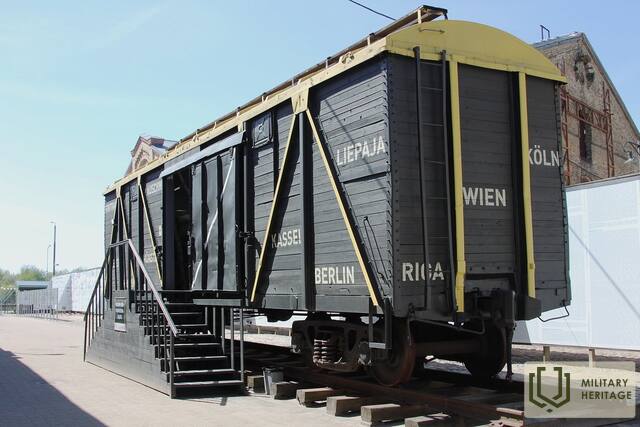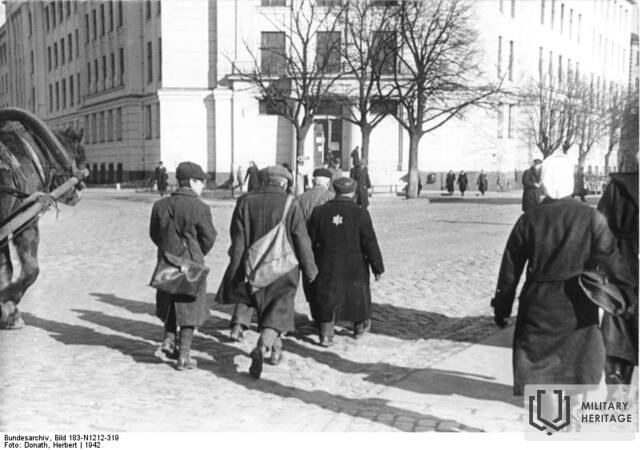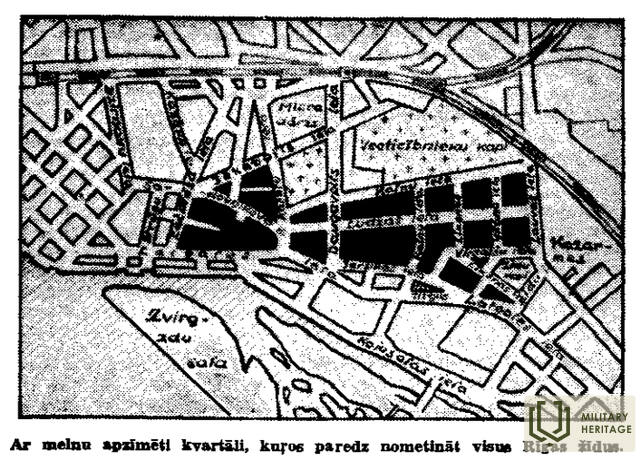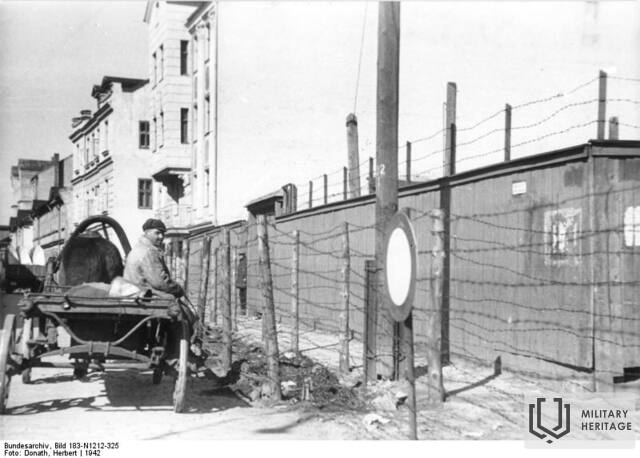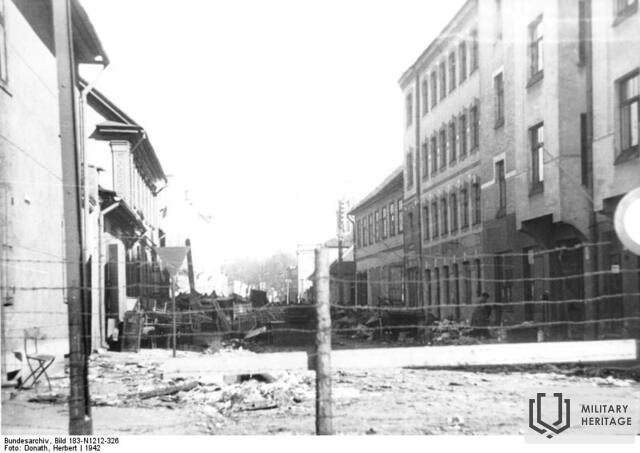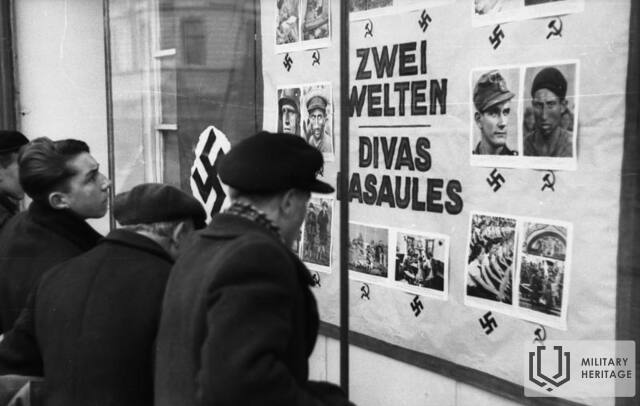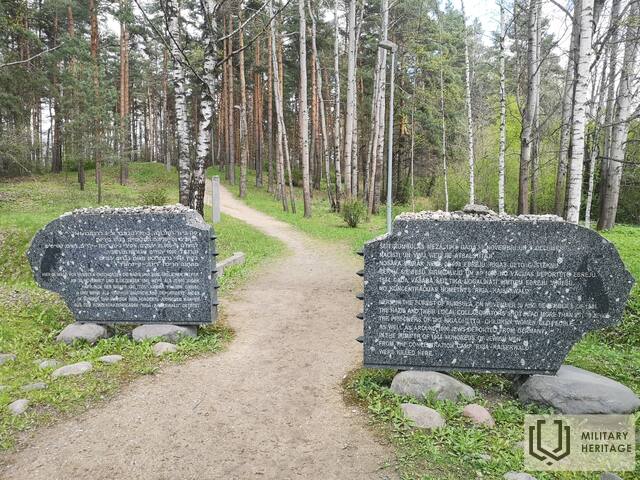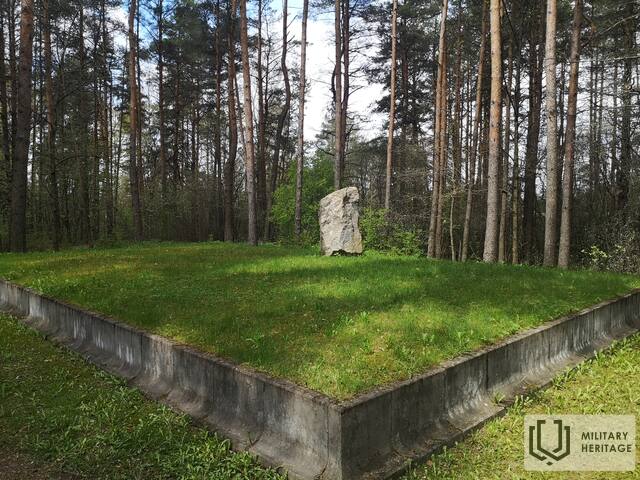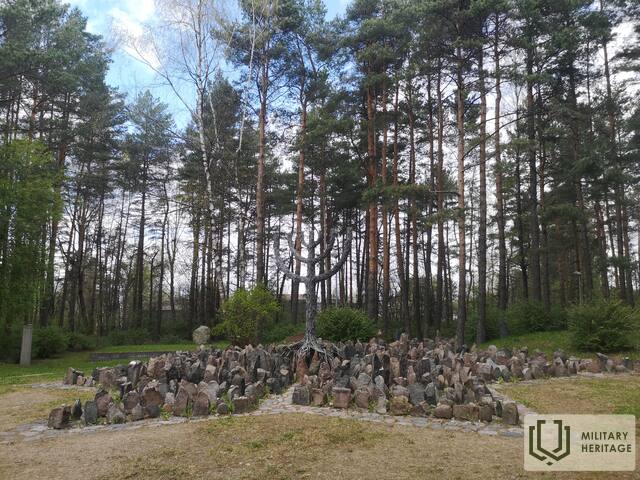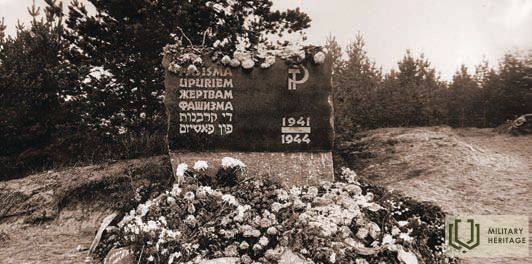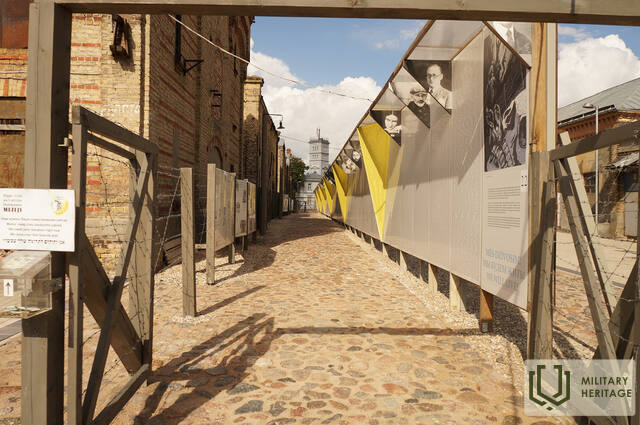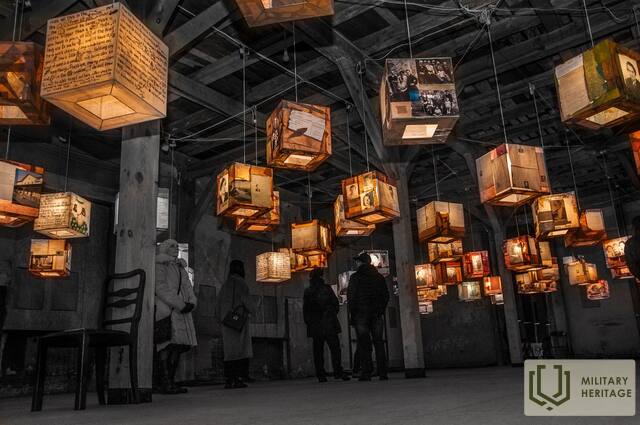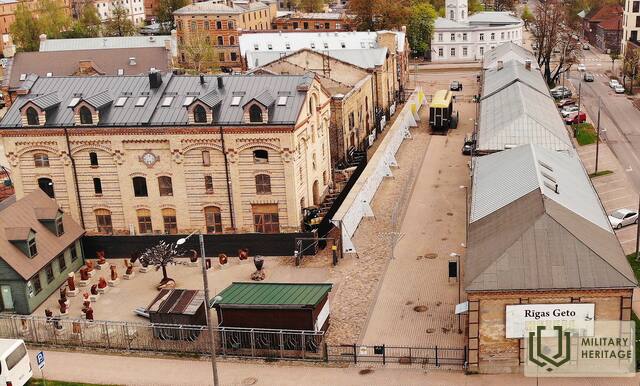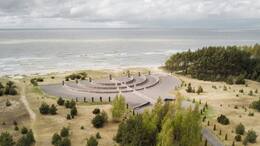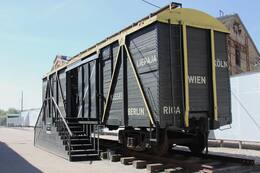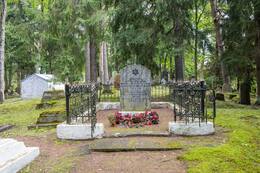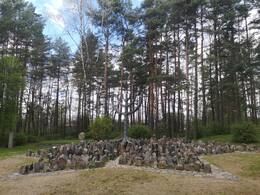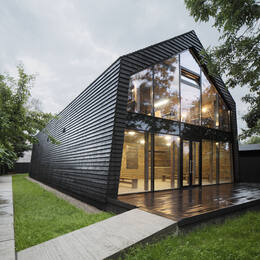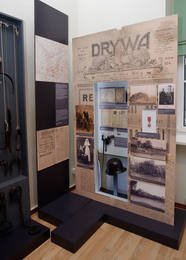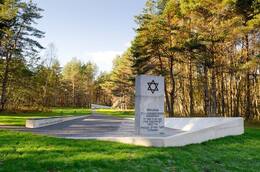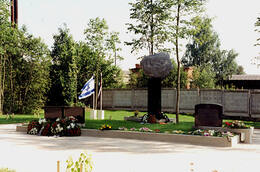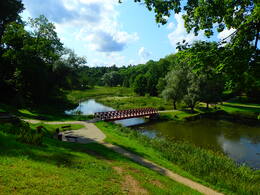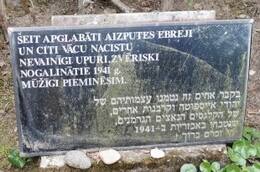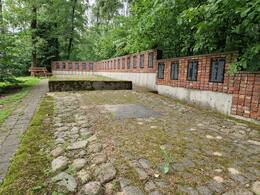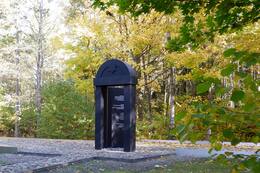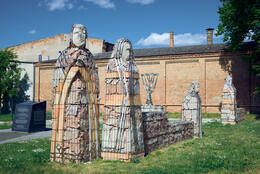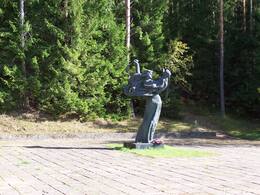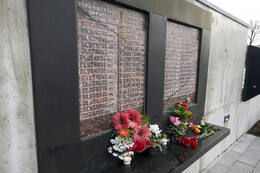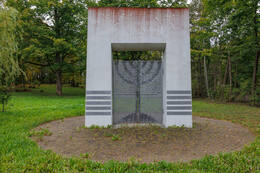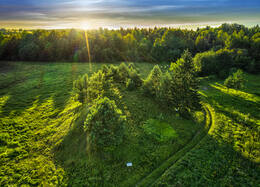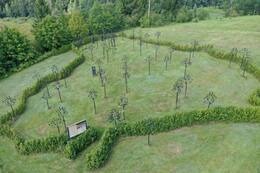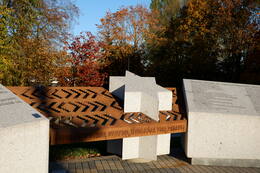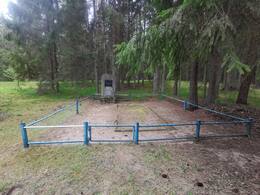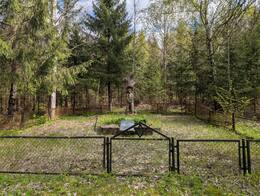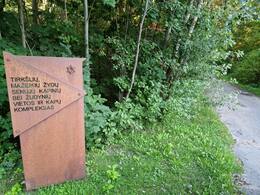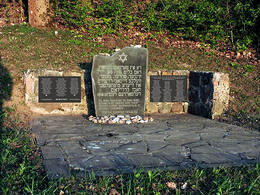Holokaustas II WW2
Holokaustas (gr. holos – visi, be pėdsakų; kaustos – sudegė) – masinis žydų naikinimas nacistinėje Vokietijoje ir jos okupuotose teritorijose Antrojo pasaulinio karo metais. Masinio žydų naikinimo procesas prasidėjo okupavus Lenkiją. 1941 m. birželio 22 d. Vokietijai įsiveržus į Sovietų Sąjungą, prasidėjo aktyvioji Holokausto fazė arba Šoa (katastrofa). Nacių slaptas vadinamasis „Galutinis žydų klausimo sprendimas“ (Endlösung der Judenfrage) buvo skirtas išžudyti visus SSRS teritorijoje gyvenančius žydus. 3 dešimtmečio antroje pusėje Latvijoje gyveno 93 479 žydai (1935 m.). Latvijoje taip pat buvo nužudyta dauguma per karą čia ištremtų žydų iš Vokietijos, Austrijos, Vengrijos, Čekoslovakijos. Genocidas taip pat buvo nukreiptas prieš romus ir psichikos ligonius Latvijoje. Holokaustas yra didžiausias masinis nusikaltimas, įvykdytas prieš civilius Latvijos istorijoje – per nacių okupaciją žuvo apie 73 000 Latvijos žydų ir 16 000 užsienio žydų.
Holokausto įgyvendinimą vokiečių okupuotoje Latvijoje iš pradžių vykdė Vokietijos saugumo policija ir SD specialusis padalinys Einsatzgruppe A – didžiausia iš keturių tokių Einsatzgruppe. Jai vadovavo SS brigados generolas ir policijos generolas majoras Walteris Stahleckeris. Iš pradžių buvo įvesti įvairūs suvaržymai ir draudimai, vėliau buvo registruojami žydai, įpareigoti ant drabužių prisiūti judaizmo simbolį – šešiakampę Dovydo žvaigždę. Žydų turtas buvo konfiskuotas, po to jie buvo izoliuoti ir galiausiai nužudyti. Pirmosios žmogžudystės įvyko 1941 m. birželio 23 d. Grobinėje. Vokietijos karinei ir civilinei valdžiai reikėjo įtvirtinti savo galią ir į žudynes įtraukti vietos gyventojus. Jos vykdavo visose gyvenvietėse, kur buvo nors ir nedaug žydų gyventojų. Pagrindiniai žmogžudysčių vykdytojai buvo specialiai suformuoti SD daliniai, vadovaujami Viktoro Arajs ir Mārtiņš Vagulāns.
Žydų kulto pastatai – sinagogos – sudeginti, o jau liepos 4 d. Rygoje sudegė XIX a. sinagoga. Antroji Choralinės sinagogos pusė buvo pastatyta Gogolio gatvėje. Rugpjūčio 23 dieną Maskvos priemiestyje buvo įkurtas getas, kuriame buvo prispausti 29 602 žmonės. 14 000 buvo patalpinti į Daugpilio getą, keli tūkstančiai – į Liepojos getą. 1941 m. lapkričio 30 d. ir gruodžio 8 d. jam vadovaujant Rumbuloje buvo nužudyta apie 25 000 Latvijos žydų ir 1 000 žydų, atvežtų iš Vokietijos. Po Rumbulos žudynių išgyveno apie 6000 žydų, kurie buvo priversti dirbti priverstiniais darbininkais. 1944 m. išgyvenusieji buvo ištremti į lagerius Vokietijoje. Vokietijos nacių okupacinė valdžia taip pat vykdė genocidą prieš Latvijos romus (čigonus) ir psichikos ligonius. Keliuose Latvijos miestuose buvo nužudyta apie 2000 romų, o Rygos, Daugpilio, Liepojos, Strenčų ir kt. psichiatrinėse ligoninėse – apie 2327 žmonės.
Daugiau informacijos šaltinių
http://okupacijasmuzejs.lv/lv/aktualitates/4-julijs--ebreju-tautas-genocida-upuru-pieminas-diena-379/
Susijusi laiko juosta
Susijusios vietos
Memorial to the victims of holocaust in Liepāja
The largest memorial to Holocaust victims in Latvia is located in Liepāja, in the Šķēde dunes. The memorial is dedicated to the memory of more than 3,000 Liepāja Jews killed during World War II. It is in the form of the Israeli national symbol, a seven-branched candelabra known as the menorah. The contours of the memorial, which are clearly visible from a bird’s eye view, are made of split boulders and granite blocks. The ‘lights’ of the menorah are made of granite pillars with inscriptions of verses from the Lamentations of Jeremiah in Hebrew, English, Latvian and Russian.
Riga Ghetto and Latvian Holocaust Museum
The Riga Ghetto and the Latvian Holocaust Museum is located in Riga close to the Riga Central Market and the Riga Central Station. The museum was opened in 2010 on the site where the city's warehouses once were. It is located in the historical part of the city, next to the border of the former Jewish ghetto. The territory of the ghetto is unique, because in terms of architecture it has not changed since World War II. It is a memorial dedicated to the tragedy suffered by the Jewish people. The German policy regarding the Jewish population in Latvia until the end of 1939 was for the German diplomats and politicians to try and pressure the Latvian government to take action against the Jews by restricting their freedom. After the emigration of the Baltic Germans in 1939, the German embassy no longer had as good an access to information on the mood of the population and the events happening in Latvia as before. When the Red Army occupied Latvia, they manipulated the society to gain some support of the Jewish population for the new occupying power. However, after the regime started a crackdown on the society as a whole, the support fell rapidly. As a result of all this, a deep divide had formed between the people. And later on, the next regime – Germany – tried to exploit it. They hoped that the local population would harass and attack the Jews, but that did not happen. So, Germany adjusted their approach and devised a new plan to initially establish a Jewish ghetto and later destroy its inhabitants.
Varaklani Jewish Cemetery - a memorial to the victims of German-fascist terror
Varakļāni Jewish Cemetery, at the end of Kapsētas Street.
There are two monuments erected in the Varakļāni Jewish cemetery after the war by surviving relatives and relatives.
One of them is located near the cemetery fence, where the mass extermination of Jews took place. The inscription on it in Russian and Yiddish reads: "We will mourn forever with our parents, brothers and sisters who died at the hands of the fascists in 1941." The second monument is inside the cemetery; In the place where the killed Jews were later reburied, there is also an inscription in Yiddish and Russian: "Eternal memory of the victims of the German-fascist terror - the Jews of Varakļāni, brutally killed on August 4, 1941".
Nazi German troops entered Varaklani in 1941. In early July, and from the very first days, the siege and isolated killings of Jews began. A conditional ghetto was established near the Jewish cemetery, to which all Jews had to move. On August 4, a German SD unit (the "Arāja team") shot virtually all Jews in Varakļāni (about 540 people) with the help of local self-defense forces on the territory of the Jewish cemetery.
Every year on the first Sunday of August, a memorial event dedicated to the Jews killed in Varakļāni takes place in the Varakļāni Jewish Cemetery.
Jewish Memorial at Rumbula
Located in Rumbula, near Moskava Street.
Rumbula is one of the largest sites of mass extermination of Jews in Europe. During two actions - 1941. On November 30 and December 8, which were realized based on the Nazi leadership's decision to completely exterminate the Jews imprisoned in the Riga ghetto, more than 25,000 people were shot in the Rumbula forest, including approximately 1,000 Jews deported from Germany. 1944 Several hundred Jewish men from the Kaiserwald concentration camp were also killed in Rumbula.
The first attempts to perpetuate the memory of the Jews killed in Rumbula date back to the end of the 60s. Despite the restrictions of the Soviet government, as a result of the initiative of some Jews in 1963. a wooden commemorative plaque with an inscription in Yiddish was attached to one of Rumbula's pine trees, while a large poster of the artist Josif Kuzkovskis "The Jew" was installed near the Rumbula railway (near the Riga-Moscow line). The poster showed the image of a man rising from the grave with a clenched fist, symbolizing a protest against what had been done. Both the commemorative plaque and the poster already in 1964. were harvested, but the Jews managed to obtain permission to erect a memorial stone in Rumbula with the inscription "Victims of Fascism" not only in Latvian and Russian, but also in Yiddish.
in 2002 On November 29, the memorial ensemble was opened in Rumbula according to the project of architect Sergejs Riž. Its establishment was financially supported by the institutions of Latvia, Israel, the USA and Germany, as well as private individuals.
On the side of the highway, by the road that leads to the memorial, a metal structure symbolizing the forces of Nazism has been installed as a sign. Nearby is a stone with the explanation that thousands of Jews were chased to death along this road. At the entrance to the memorial itself, several stone plaques with inscriptions in Latvian, English, German and Hebrew introduce the events of the Rumbula tragedy and the history of the establishment of the memorial. In the central part of the memorial, above the square, which is made in the shape of the Star of David, rises a seven-branched candlestick - a menorah, surrounded by stones with engraved names of the Jews killed in Rumbula. The names of the streets of the former Riga ghetto are engraved in individual stones with which the square is paved. There are several mass graves on the territory of the memorial, the places of which are marked with rectangular concrete borders.
Žanis Lipke Memorial
The Žanis Lipke memorial is located in Ķīpsala, Riga. The Žanis Lipke Museum is probably one of the most hidden museums in Riga. The obscure location of the memorial is not a coincidence and it has a symbolic meaning. It has been set up in the location of a former underground hideout that was created to save people during the German occupation of World War II. Here Žanis Lipke and his family rescued 55 Jews. Nowadays a memorial has been built next to the Žanis Lipke family house. The memorial ‘Black Shed’ is a symbolic building where shelter was provided and received. The design of the building has been taken from the historical tarred huts of Ķīpsala fishermen and sailors. These huts were built using materials from barges; hence they had a very distinct colour and tar smell. But not only the story of this historic place is unique. The way the museum communicates its message is also quite notable. The overall design has similarities with the Noah’s Ark described in the Bible, and it also resembles a boat that has been pulled ashore and overturned – a boat that has fulfilled its task. The concept of this memorial draws from the historic accuracy of this place and story and the testimonies associated with it. It is a story of a desire for freedom, unbelievable escape and trust. On your way to the museum, you’ll also be able to see the historic buildings of Pārdaugava.
Preiļi Museum of History and Applied Art exhibition "Museum stories for Latvia"
It is located in the premises of the Preiļi Cultural Center.
Preiļi Museum of History and Applied Art (PVLMM) exhibition "Museum stories for Latvia" about the First World War, the War of Independence and the Second World War can be viewed.
The "Story of Drywys" section of the exhibition "Museum Stories for Latvia" (opened in 2018) of the Museum of Preiļi History and Applied Arts is dedicated to the First World War, the War of Independence and the liberation of Latgale, as well as to the knights of the Lāčplešana War Order. The exhibition section "The story of the flag" tells about the difficult events of the Second World War period, during which the people of Preila were affected by deportations, the Holocaust, involvement in the military units of the warring parties, and after the war - in the ranks of national partisans. The "Righteous Among the Nations" medal awarded to Vladislav Vuškānas, the savior of the Jews from Preiliat, can also be viewed.
Upon prior application, a tour is available in Russian and English.
Klogos koncentracijos stovykla ir holokausto memorialas
This memorial to the victims of the Holocaust is situated not far from the small borough of Klooga.
The first monument was erected here in 1951, but it essentially praised the Soviet ideology and did little to commemorate the victims of the Holocaust. In 1994, the plaques on the monument were replaced with new ones at the request of the Jewish community in Estonia so as to do justice to the victims' ethnic roots. On the 50th anniversary of the mass murder perpetrated in Klooga, a monument to the Jews killed in Estonia from 1941-1944 was unveiled 100 metres from the first monument. In 2005, a third monument was unveiled commemorating the Jews who died or were killed in the concentration camp in Klooga.
The memorial was renovated in 2013 to tie the three monuments together, with the Estonian History Museum opening an outdoor exhibition here entitled ‘Klooga camp and the Holocaust’.
Klooga concentration camp was established by the German regime in September 1943. It was a forced-labour sub-camp of the Vaivara concentration camp complex in Estonia. On 19 September 1944, one of the largest mass murders in German-occupied Estonia was committed: all of the Jews at the camp (around 2000 in total) were killed as the Red Army approached.
Preilius Holocaust Memorial
It is located in the Preiļu Jewish cemetery on Cēsu street.
The architect of the memorial is Sergejs Rizh. Opened on August 8, 2004. The memorial was built on the initiative and personal funds of Dāvid Zilbermanis (USA), a former resident of Preiļi, engineer and public worker. In 2015, another monument was added to the memorial - an arch installed at the entrance to the cemetery in the form of a symbolic gate.
The memorial is located on the edge of the Preiļi Jewish cemetery, next to the place where around 800 Jews from Preiļi and the surrounding area were killed in the summer of 1941 after the entry of Nazi German troops with the involvement of local collaborators. The diary of Sheina Gram (1926-1941), a Jewish girl from Preiļi, which she started writing on June 22 - the day the war between the USSR and Germany started - until August 8, is a testimony of the events of this time. Sheina, together with her family and other surviving Jews of Preila, was killed next to the Jewish cemetery on August 9. Thanks to the help of Vladislav Vuškānas (1887-1953) from Preili, 6 Jews from Preili managed to survive the German occupation in hiding. On the stones of the monument are engraved entries from Sheina Gram's diary, as well as words of gratitude to the savior of the Jews, Vladislav Vushkan. An urn with the names of the 750 Jews killed here is buried at the foot of the monument.
Misiņkalns Military Heritage Trail
Misiņkalns nature park is located in the town of Aizpute. Misiņkalns is the highest place in the city of Aizpute. Its height reaches 95.4 m. The top offers a scenic view of the city. Misiņkalns nature park was started to be built in the 20th century. at first. The area of the park is currently about 28 ha.
In the territory of the park there are several places and memorials related to the events of the 20th century - the memorial stele of the soldiers who died in the Latvian Freedom Wars - the cavaliers of the Lāčpleš Order, the place of the Holocaust memorial, the place of remembrance of the repressed and the memorial plaque of the fallen red partisans.
In the park, you can get to know the plants and plantations of various rare species, as well as enjoy the untouched nature. Currently, the park is criss-crossed by renovated walking and cycling paths, and there is a motorcycle track on the territory of the park, where Latvian motocross competitions take place.
In order to get to know the cultural and historical heritage of Misiņkalns manor park more fully, we recommend using the services of a guide.
Holocaust reburial site
Nazi troops entered Aizpute in 1941. on June 28. Already at the beginning of July, some Jews were shot in the Dzirkali forest and the city park, while the rest of the Jews of the city and the immediate surroundings were arrested and placed in two city synagogues.
After that, the mass killing of Jews took place during two actions.
Today, a monument with an inscription in Hebrew and Latvian has been installed at the reburial site: "The Jews of Aizpute and other innocent victims of the German Nazis, brutally killed in 1941, are buried here. We will remember forever."
Kaušėnų Holokausto aukų memorialas
Kaušėnų kaime (Plungės r.) žydų žudynių vietoje įrengtas Kaušėnų Holokausto aukų memorialas. Memorialas yra skirtas II-ojo Pasaulinio karo metais sunaikintai Plungės ir aplinkinių kaimų žydų bendruomenei atminti.
Memorialas įkurtas paskutiniojo Plungės žydo Jakovo Bunkos iniciatyva. Pirmasis paminklas iškilo 1952 m. II Pasaulinio karo aukoms, o 1986-1989 m. įkurtas ir memorialas iš ąžuolinių paminklų žuvusiems žydams pagerbti. 2011 m. įrengta Atminties siena, kuri sumūryta iš 1800 nugriautos Plungės sinagogos plytų, kurių kiekviena skirta nužudytajam atminti, o prie sienos pritvirtintos plokštės su žinomomis 1200 (iš 1800) žydų pavardėmis. Greta memorialo sukurta Gelbėtojų alėja, kurioje ant atskirų vardinių stulpelių surašyti asmenys nacių okupacijos metais Plungėje ir jos apylinkėse gelbėję pasmerktuosius žydus.
1941 m. liepos 12-13 d. Kaušėnų kalnelyje buvo nužudyta ir palaidota apie 1800 Plungės krašto žydų, prieš tai 2 savaites laikytų Plungės sinagogoje žiauriomis sąlygomis. Genocido dieną galintys eiti buvo varomi pėsti 5 km į egzekucijos vietą, kiti buvo sunkvežimiais vežami atskiromis grupėmis. Aukoms buvo liepta išsikasti sau duobes po ko buvo sušaudomi. Kita grupė turėjo užkasti nužudytus ir iškasti naują duobę sau.
Memorialas yra įspūdingiausių Europos žydų tautos tragediją atspindinčių memorialų dešimtuke.
Šeduvos žydų holokausto vieta Pakutenių kaime
Pakutenių miške (Radviliškio r.), apie 8 km į pietryčius nuo Šeduvos šalia žvyrkelio yra viena iš 3 Šeduvos žydų holokausto vietų.
Šioje vietoje 1941 m. rugpjūtį buvo nužudyti 27 žydai, įskaitant paskutinį Šeduvos rabiną Mordechajų Dovydą Henkiną. Tuo tarpu kitose dviejose vietose Liaudiškių miške nužudyta dar apie 700 žmonių.
Naciams užėmus Šeduvą 1941 metų birželio 25 dieną, jau liepos pradžioje miestelio žydai prievartos būdu iškeldinti iš savo namų ir išvaryti į gretimą Pavartyčių kaimą, kur buvo įrengtas getas. Rugpjūčio 25-26 dienomis nedidelė dalis jų sušaudyta Pakutenių, likusieji – Liaudiškių miške.
2014-2015 m. Šeduvos žydų memorialinio fondo iniciatyva žudynių vietos buvo sutvarkytos ir pritaikytos lankymui. Pakutenių žydų žudynių vietoje įrengtas skulptoriaus Romo Kvinto paminklas „Šviesos žvaigždės buveinė“.
Šeduvos žydų I ir II holokausto vietos
Šeduvos I ir II holokausto vietos yra Liaudiškių miške (Radviliškio r.), apie 10 km į pietvakarius nuo Šeduvos. Žvyrkelyje pastatyta lankytino objekto nuoroda.
Pirmoji žydų tautybės žmonių palaikų kapavietė užima mišku apsuptą 375 m² dydžio teritoriją, kurios didesnė dalis išgrįsta akmenimis. Šioje vietoje nužudyta ir užkasta apie 400 žmonių. Už maždaug 500 m yra antroji kapavietė. Žydų tautybės žmonių palaikai palaidoti 144 m² dydžio teritorijoje. Aikštelės reljefas lygus, didesnė dalis teritorijos taip pat išgrįsta akmenimis. Šioje vietoje nužudyta ir užkasta apie 300 žmonių.
1941 m. šiose vietose buvo nužudyta visa Šeduvos miestelio žydų bendruomenė – beveik 700 žmonių. Prieš tai jie dar mėnesį praleido Pavartyčių kaime įkurtame gete. Rugpjūčio 25-26 d. geto gyventojai buvo išvežti į Liaudiškių mišką. Prie iškastos duobės buvo atvaromi pasmerktieji, kuriuos vokiečių įsakymu nužudė vietiniai policininkai ir baltaraiščiai tarp nužudytųjų buvo 230 vyrų, 275 moteris ir 159 vaikai.
2014-2015 m. Šeduvos žydų memorialinio fondo iniciatyva žudynių vietos buvo sutvarkytos ir pritaikytos lankymui. Žudynių vietose įrengti 2 skulptoriaus Romo Kvinto paminklai: „Durys“ ir „Spindulys-žvaigždė“.
Atminimo memorialas „Sinagogos sodas“ (Sinagogas dārzs)
Memorialas yra miesto centre, netoli Bauskės savivaldybės Turizmo informacijos centro ir Rotušės aikštės. Jis sukurtas Bauskės žydų palikuonių Izraelyje, JAV ir Di džiojoje Britanijoje iniciatyva ir aukomis, taip pat Bauskės savivaldybės tarybos ir Latvijos žydų bendruomenių bei bendrijų paramos dėka. Memorialą suprojektavo skulptorius Girtis Burvis. Jis yra buvusios Bauskės Didžiosios sinagogos dydžio, o akmens statulos simbolizuoja žydus, išeinančius iš sinagogos po pamaldų. Memorialo centre stovi simbolinė bima – pa aukštinta platforma arba stalas, naudojamas sinagogoje per žydų religines apeigas. Ant jos parašyta: „Pagarba Bauskės žydams, kurie čia gyveno šimtmečius ir kūrė šį miestą, o 1941 m. buvo nužudyti nacių ir jų vietinių parankinių. Pagerbiant žydų tautos atminimą – Bauskės žydų palikuonys ir Bauskės gyventojai.“ 1935 m. Bauskėje gyveno beveik 800 žydų. 1941 m. liepą, prasidėjus nacių okupacijai, daug žydų buvo suimti ir iš vežti, o apie 700 žydų sušaudyti. Bauskės Didžioji sinagoga buvo sugriauta per Antrąjį pasaulinį karą.
Ančupanų memorialas Antrojo pasaulinio karo aukoms atminti
Memorialas yra Ančupanuose, Rėzeknės apskrityje. Jis buvo sukurtas, siekiant įamžinti Audrinių tragediją – 1942 m. naci stinės Vokietijos okupacijos metu įvykdytą civilių gyventojų naikinimo operaciją Audrinių kaime, Makašanų seniūnijoje, Rėzeknės apskrityje. Nuo 1941 m. rudens Audriniuose slapstėsi keli pabėgę Rau donosios armijos karo belaisviai.
1941 m. gruodžio 18 d. buvo nustatyta jų buvimo vieta, ir per susišaudymą žuvo 4 pagalbi nės saugumo policijos pareigūnai. Gruodžio 24 d. 203 Audri nių gyventojai buvo suimti ir įkalinti Rėzeknės kalėjime. 1942 m. sausio 3 d. dauguma suimtųjų buvo sušaudyti netoli An čupanų kalvos, maždaug už 5 km nuo Rėzeknės. Sausio 4 d. Rėzeknės turgaus aikštėje viešai buvo sušaudyta 30 Audrinių kaime suimtų vyrų, o pats kaimas sudegintas. Memorialas atidengtas 1974 m. liepos 27 d. Jo autorius – kraš tovaizdžio architektas Alfonsas Kiškis (1910–1994). Dešinėje kelio pusėje augančios nuolat žaliuojančios eglės simboli zuoja žmones, išrikiuotus į eilę sušaudymui, o kitoje kelio pu sėje esanti akmeninė siena – šaudytojus. Žemesnėje dalyje – Kančios slėnyje – pro masines sušaudytų žmonių kapavietes veda lauko rieduliais grįstas takas, kuris baigiasi prie betoni nės sienos su užrašu: „Jie mirė, kad gyventum tu“. Toliau kyla laiptai į Gyvybės aikštę, kur stovi skulptūra „Motina obelis“, kurią sukūrė skulptorė Rasa Kalninia-Grinberga (1936 m.).
Memorial to the victims of Audriņi village
A memorial plaque at the former Rēzekne prison, opened in 1965. Dedicated to thirty men from the village of Audriņi, Makašēni parish, who were publicly shot at this location on January 4, 1942. The names of the 30 men who were shot are engraved on the plaque.
Shortly before that, it was discovered that escaped Red Army prisoners of war were hiding in the village of Audriņi. In the armed clashes that broke out during their capture, 4 auxiliary police officers were killed. The Nazi occupation authorities, in revenge for what had happened, ordered the killing of all the inhabitants of Audriņi and the burning of the village. The public execution in Rēzekne was part of the revenge campaign.
Holocaust Memorial
In August 2004, a Holocaust Memorial was opened on Cēsu Street in Preiļi. The architect was Sergejs Rižs, and the author and financier of the idea was David Zilbermanis, a local resident living in the United States. The memorial is located in the area between the graves of Jewish citizens and the shooting pits of Jewish residents.
The first Jews arrived in Preiļi at the beginning of the 19th century, when the town of Preiļi began to form. According to the 1935 census, out of 1,662 residents of Preiļi, 847 (51%) were Jews. Most of them were merchants, craftsmen, as well as intelligentsia – doctors and teachers.
When the German Nazi army entered on July 28, 1941, more than 720 Jews from Preiļi and the surrounding area were exterminated on August 9 and 10. After the war, some Jews returned to Preiļi, but the community was never restored.
In 2013 and 2014, students of the German youth association LOT and its leader Klaus Peter Rex carried out clean-up and monument cleaning work at the Jewish citizens' cemetery. A map of the cemetery was drawn up. In 2015, at the initiative of David Zilbermanis, with his funding and donations, a memorial arch was opened for the Jewish community in Preili, at the entrance to the Jewish citizens' cemetery, on the way to the Holocaust Memorial.
In 2018, the Preiļi Memorial Society (chairman Sergejs Rižs) conducted excavation work at the site of the killing of Jews next to the cemetery of Jewish citizens. Three pits were discovered. After conservation, the material evidence can be viewed in the main exhibition of the Preiļi History and Applied Arts Museum at Raina Boulevard 28. Museum specialists offer visitors the educational program “Thinking about the Holocaust means thinking about yourself.” The program begins in the museum exhibition and ends at the Holocaust Victims Memorial. The memorial, together with the cemetery, is used to educate the public as an open-air museum.
Žydų holokausto vieta Kražiuose (prie Medžiokalnio)
Medžiokalnio kalno papėdėje šalia Kražių miestelio yra Kražių žydų žudynių vieta ir kapas.
Prieš Antrąjį pasaulinį karą Kražių miestelyje gyveno apie 1500 žmonių, iš kurių apie 80 žydų šeimų – 450-500 žydų kilmės gyventojų. 1941 m. Kražių žydai buvo izoliuoti dvaro daržinėje įrengtame gete (į jį vėliau pateko taip pat iš Karklėnų atvežti žydai) ir per kelis etapus išžudyti.
Naciai aktyviai stengėsi įtraukti į holokaustą lietuvius: sušaudant žydus, vokiečių karininkai siekė, kad kiekvienas į mišką kaip konvojininkas atvykęs policininkas, sukilėlis, partizanas arba baltaraištis nušautų bent vieną savo kaimyną ar pažįstamą žydą. Po 1941 m. įvykdytų žudynių iš Kražių žydų bendruomenės liko apie 20 asmenų, kurie slapstėsi Lietuvoje arba pasitraukė į SSRS gilumą.
1941 m. rugpjūčio 2 d. nacistai ir jų talkininkai prie Medžiokalnio nužudė daugiau nei 70 vaikų ir kelis suaugusius žydus. Šias žudynes istorikas Stanislovas Buchaveckas pavadinęs „Žydų vaikų išžudymu“.
Šiuo metu šioje vietoje stovi paminklas su iškaltu užrašu: „Šioje vietoje 1941.08.02 nacistai ir jų talkininkai nužudė 71 Kražių žydą“. Užrašas hebrajų kalba pažymi, kad buvo nužudyti 71 Kražių žydas: 6 vyrai ir moterys, 65 vaikai.
Litvakų atminimo sodas
Žemaitijos nacionaliniame parke, Medsėdžių kaime, maždaug už 2 km nuo Platelių miestelio centro Jakovo Bunkos labdaros ir paramos fondas 2014 m. įkūrė Litvakų atminimo sodą. Tai paminklas skirtas sunaikintoms Lietuvos žydų bendruomenėms atminti.
12 arų ploto sodas atkartoja Lietuvos kontūrą, o vietos, kuriose 1941-1944 metais sunaikintos žydų bendruomenės, pažymėtos kalto metalo obelimis. Kaltinių obelų autorius – Artūras Platakis. Obuoliai medžiuose – bendruomenėse gyvenusios šeimos. Viso pasaulio litvakai gali prisidėti prie sodo kūrimo, užsakydami naujas obelis ir obuolius savo protėviams atminti. Sode taip pat statomi Karelijos granito stulpeliai, skirti individualiai pagerbti litvakų pasiekimus pasaulyje.
2016 m. ši iniciatyva išplėsta – obelimis pradėtas įamžinti visos Lietuvos Didžiosios kunigaikštystės litvakų bei žydų gelbėtojų Holokausto metu atminimas. Stendas prie įėjimo į sodą skaičiais pasakoja apie visos Lietuvos buvusias žydų bendruomenes.
Šiuo metu sode jau „išaugo“ obelys Alytaus, Alsėdžių, Kalvarijos, Mosėdžio, Platelių, Plungės, Telšių, Vabalninko, Viekšnių ir kitoms žydų bendruomenėms atminti.
Pasaulio tautų teisuolių skveras (paminklas)
2021 m. spalio 22 d. Šiauliuose, Ežero ir Vilniaus gatvių sankirtoje buvo atidarytas Pasaulio Tautų Teisuolių skveras. Tai pirmasis paminklas Pasaulio Tautų Teisuoliams Lietuvoje. Paminklo autorius – iš Šiaulių kilęs dizaineris Adas Toleikis, o iniciatorius Šiaulių apskrities žydų bendruomenės pirmininkas Sania Kerbelis.
Sukurtame monumente „Jungtis“ iškaltos Šiaulių apskrities Pasaulio Tautų Teisuolių pavardės, įamžinančios 148 žydų gelbėtojus, o meniniai akcentai žymi Šiaulių getų vartų vietas. Šiaulių mieste buvo įsteigti du getai: vadinamajame Kaukazo kvartale ir Ežero–Trakų g. kvartale. Į pirmąjį getą buvo siunčiami fiziškai stiprūs ir darbui tinkami asmenys, į antrąjį – specialistai (gydytojai, mechanikai ir kiti). Getas Šiauliuose buvo įsteigtas 1941 m. vasarą Šiaulių miesto karo komendanto nurodymu, o likviduotas 1944 m., nacistinei Vokietijai traukiantis ir likusius žydus pervežus į Štuthofo ir Dachau koncentracijos stovyklas. Getuose buvo įkalinta daugiau kaip 5950 žydų. Tarpukariu Šiauliuose gyveno apie 6500–8000 žydų, dalis jų savo noru pasitraukė į Rusijos gilumą, o po holokausto liko vos apie 350–500 žydų kilmės gyventojų.
Kražių žydų holokausto vieta Kuprės miške
Kuprės miške apie 13 kilometrų nuo Kražių miestelio yra Kražių žydų žudynių vieta ir kapas.
Prieš Antrąjį pasaulinį karą Kražių miestelyje gyveno apie 1500 žmonių, iš kurių apie 80 žydų šeimų – 450-500 žydų kilmės gyventojų. 1941 m. vasarą Kražių žydai buvo izoliuoti dvaro daržinėje įrengtame gete.
1941 m. liepos 26 d. įvyko masinės Kražių žydų žudynės Kuprės miške. Sunkvežimiais apie 300 suaugusiųjų ir jaunuolių buvo nuvežta į mišką. Operacijos metu žydai buvo rikiuojami grupėmis ir sodinami į sunkvežimius. Keliaujant į žudynių vietą, buvo perduoti kastuvai – ženklas, kad aukos turės iškasti duobes. Kuprės miške žydai iškasė gilią pailgą duobę. Vėliau jie buvo priversti nusirengti, o egzekucija vyko organizuotu būdu: aukos buvo statomos po penkis prie duobės krašto, šaudoma dviem eilėmis – pirmoji šaudė į nugarą ar krūtinę, antroji – į galvą.
Žudynes vykdė tiek vietos TDA (Tautinio darbo apsaugos) būrio nariai, tiek vokiečių kareiviai ir karininkai. Žudynės užtruko dėl sugedusio sunkvežimio ir pasipriešinimo Kražių gete, kai kaliniai suprato, kad išvežtieji nebegrįžta. Dėl šių aplinkybių tą pačią dieną nebuvo įvykdyta planuota 12 sovietų aktyvistų egzekucija. Šie asmenys vėliau buvo pervežti į Raseinių kalėjimą ir dauguma jų buvo paleisti.
Vokiečių saugumo pajėgos po žudynių konfiskavo žydų turėtus vertingus daiktus. Operacijos rezultatas – beveik visi Kražių žydų bendruomenės nariai, vyresni nei 12 metų, buvo sunaikinti.
Šiuo metu holokausto vietoje stovi paminklas, o žudynių duobės vieta yra aptverta tvorele.
Šateikių holokausto aukų kapai
Salantų žydų bendruomenės moterų ir vaikų žudynių vieta ir kapas -istorinės holokausto aukų kapinės šiaurės vakarinėje Plungės rajono savivaldybės teritorijos dalyje, Šateikių Rūdaičiuose (Platelių seniūnija), 0,5 km į šiaurės rytus nuo kelio Skuodas-Klaipėda, Šateikių girios šiaurės vakariniame pakraštyje.
Kapavietė stačiakampio plano, 10 x 10 m dydžio, apjuosta vielos tinklo tvora. Jos šiaurės vakarinėje dalyje įrengti metaliniai, ažūriniai, vienvėriai varteliai, kurių viršutinėje dalyje pavaizduota Dovydo žvaigždė. Paminklinėje granito plokštėje iškalta Dovydo žvaigždė bei memorialinis užrašas jidiš ir lietuvių kalbomis. 1980 m. pastatyta medinė skulptūra, vaizduojanti stovintį žydą surištomis rankomis (autorius – tautodailininkas Jakovas Bunka). Teritorijos plotas – 0,01 ha.
Šioje vietoje 1941 m. liepos–rugpjūčio mėn. Salantų ir Šateikių pagalbiniai policininkai žudė Salantų žydų bendruomenės moteris ir vaikus. Egzekucija vyko trimis etapais. Pirmosios žudynės įvyko apie 1941 m. liepos 20 d. Policijos nurodymu paryčiais prie Salantų sinagogos, kurioje buvo laikomos žydės su vaikais, iš kaimų atvyko vežikai su vežimais, kurie, lydimi pagalbinių policininkų, į Šateikių girią išvežė apie 60–70 moterų. Antrųjų žudynių metu liepos mėn. pabaigoje buvo nužudytos paskutinės gete likusios daugiau kaip 50 moterų su vaikais. Rugpjūčio mėn. pabaigoje pagalbiniai policininkai į Šateikių girią konvojavo sušaudymui apie 100 Salantų žydų moterų, kurios nuo liepos mėn. dirbo pagalbinius žemės ūkio darbus Šalyno dvare ir pas Salantų valsčiaus ūkininkus.
Holokausto Lietuvoje atlaso duomenimis čia palaidotos 95 aukos. Kapavietės paminklinėje lentoje ir dokumentų rinkinyje „Masinės žudynės Lietuvoje“ nurodyta, jog čia žuvo 100 žydų vyrų, moterų ir vaikų. Salantų istorijos tyrinėtojas Paulius Vaniuchinas nustatė, kad šioje vietoje buvo nužudyta 210–220 moterų ir vaikų.
Žudynių ir laidojimo vieta 1970 m. paskelbta vietinės reikšmės istorijos paminklu, 1993 m. registruota kultūros vertybių registre.
Mažeikių ir jų apylinkių žydų žudynių vieta
Objektas yra prie senųjų Mažeikių žydų kapinių. Važiuojant Sedos gatve (164 keliu) iš Mažeikių link Tirkšlių/Sedos, kairėje kelio pusėje stovi ženklas „Žydų genocido ir II-ojo pasaulinio karo aukų kapavietė“.
Iki Holokausto pradžios, 1940 m. liepos 1 d., Mažeikių mieste gyveno apie 1 100 žydų. 1941 m. birželio pabaigoje, prasidėjus vokiečių okupacijai, iki 1 000 žydų buvo suimti ir laikomi Mažeikių sinagogoje. Liepos viduryje Leckavos žydai – apie 40 žmonių – buvo uždaryti į Lačo daržinę Mažeikiuose, moterys ir vaikai – daržinėje, o vyrai – sinagogoje.
1941 m. liepos 29 d. į Mažeikius atvykę vokiečiai vertė žydus kasti duobes prie žydų kapinių, o liepos 30 d. 6 val. ryto prasidėjo masinės žudynės. Pirmą dieną šaudė vokiečiai, vėliau žudynes tęsė vietos baltaraiščiai. Rugpjūčio pradžioje prie tų pačių kapinių sušaudyti ir žydai iš kitų valsčių bei tarybiniai aktyvistai.
1944 m. gruodžio 7 d. sovietų komisijos nurodymu buvo atkasti kapai ir atlikta teismo medicininė ekspertizė. Konstatuota, kad už 3 km nuo Mažeikių, ant Ventos upės kranto, žydų kapinėse rastos 5 kapavietės, kuriose užkasta apie 4000 palaikų. Prie Mažeikių sušaudytų žydų skaičius nurodomas skirtingai – nuo 3000 iki 4000. Istoriniai tyrimai leidžia teigti, kad šie skaičiai padidinti – aukų būta apie 2500.
Šiuo metu objektas yra lankytina vieta, kurią gali aplankyti visi besidomintys karinio paveldo istorija.
Platelių žydų žudynių vieta ir kapai (Jazminų kalnas)
Jazminų kalnu praminta kalva, esanti Platelio miestelio pakraštyje. Kalno papėdėje 1941 m. liepos mėn. sušaudyta 30 Platelių žydų (dalis Platelių žydų sušaudyti Laumalenkų pusiasalyje). Tarpukariu Plateliuose gyveno apie 100 žydų, tačiau „[…] likimas visų tas pats. Iš pradžių, kaip būdavo įprasta, surinko vyrus, čia pat prie Platelių, matėt, paminklas kur stovi – ten juos sušaudė. Po poros savaičių moteris, vaikus, senius išvedė čia, už Platelių, už kelių kilometrų į mišką, ir ten visus sušaudė“, – pasakojo Eugenijus Bunka, išgyvenusio holokaustą tautodailininko Jakovo Bunkos sūnus.
Apie 1985 m. jo tėvas tautodailininkas Jakovas Bunka išskaptavo ir ant kalno pastatė dekoratyvinę Mozės skulptūrą. 2016 m. skulptūra sugriuvo, 2018 m. buvo pastatyta kopija, išskaptuota tautodailininko Antano Vaškio.
Kalno papėdėje žydų genocido atminimui taip pat pastatyta paminklinė granito plokštė, ant kurios yra užrašai jidiš ir lietuvių kalbomis: ,,Čia buvo pralietas 30 žydų – vaikų, moterų, vyrų kraujas. Juos 1941 liepą žiauriai nužudė nacionalistai ir jų vietiniai talkininkai. Tebūnie šventas nekaltai žuvusiųjų atminimas“. 2019 m. pridėtos dar dvi granitinės plokštės su 1939 m. žydų, gyvenusių Plateliuose, sąrašu.
Susijusi istorija
Rygos getas ir holokaustas
Sąmoningai parinkti trijų skirtingų žmonių atsiminimų fragmentai, leidžiantys tiksliau pažvelgti į Holokausto nusikaltimą iš skirtingų požiūrių.
Dovydo žvaigždė Dundagos koncentracijos stovyklos memorialinėje vietoje
Nepriklausomybę atgavę dundagiškiai žydų žudynių ir perlaidojimo vietoje prie kelio Mazirbė-Dundagas pastatė didelę medinę Dovydo žvaigždę, o vėliau Latvijos žydų kongregacijų ir bendruomenių taryba prie jos atidengė ir paminklinį akmenį.
Žmogus, gelbėjęs persekiojamuosius
Bronius Gotautas, žmonių vadinamas Broliuku, Antrojo pasaulinio karo metais ir pokaryje rizikavo gyvybe gelbėdamas persekiojamus žmones - tiek žydus, tiek lietuvius nacionalistus, tiek rusų kareivius.
Meilės istorija, kurią užbaigė karas
Ši istorija pasakoja apie Prano Laucevičiaus ir Rūtos Gurvičiūtės meilę ir išlikimo kovą Antrojo pasaulinio karo metais. Ji liudija apie drąsą, pasiaukojimą ir mirtį, kai karo žiaurumai užgniaužė tautybių ribas, bet ne žmonių jausmus.
Lyg antrąkart gimusi
1941 m. liepos ir rugpjūčio mėnesiais Kražiuose nacistinė valdžia išžudė beveik visą miestelio bendruomenę. Stebuklingai šią tragediją išgyveno Kražių geto kalinė, K.Požėlos vardo kolūkio kolūkietė Marytė Gerčienė.
Salantų žydų moterų žudynės Šateikių miške
1941 m. vasarą Šateikių miške įvykdytos žydų moterų ir vaikų žudynės, kurias organizavo vietos policija ir baltaraiščiai. Į žudynių vietą aukos buvo vežamos iš Salantų, o prieš sušaudymą joms liepta nusirengti ir šokti į iškastą duobę. Skirtingų šaltinių duomenimis per šias egzekucijas nužudyta nuo 95 iki 230 žmonių, daugiausiai moterų ir merginų.
2500 nelaimingų sielų gyvenimą baigusių Mažeikiuose
1941 m. liepos pabaigoje Mažeikiuose prasidėjo masinės žydų žudynės, kurias pradėjo vokiečiai, o vėliau tęsė vietos baltaraiščiai. Žmonės buvo vedami grupėmis į žydų kapines, verčiami nusirengti ir sušaudomi prie iškastų duobių. Per kelias dienas nužudyta daugiau kaip 2 000 žydų iš Mažeikių ir aplinkinių miestelių.
Lietuviai gelbėtojai - Miriam Javnaitės-Voronovos išgyvenimo istorija
Antrojo pasaulinio karo metais Miriam Javnaitė-Voronova išgyveno Holokaustą dėka daugelio lietuvių, kurie, rizikuodami savo ir artimųjų gyvybėmis, slėpė, maitino ir globojo persekiojamus žydus.
Šarnelės kaimo gyventojų žygdarbiai
Antrojo pasaulinio karo metais dvi Šarnelės kaimo šeimos – Striaupiai ir Kerpauskai – nepaisydamos mirtino pavojaus gelbėjo žydų gyvybes. Striaupių šeima išgelbėjo net 26 žmones, tarp jų – devynias šeimas, o Kerpauskų sodybos miške buvo įrengta slėptuvė Alsėdžių žydo kailiadirbio šeimai.
Platelių žydų tragedija
Platelių miestelio Jazminų kalne 1941 m. liepos mėnesį buvo nužudyti 30 vietos žydų, o vieta vėliau tapo atmintina dėl tragiškų čia nutikusių įvykių.
Plungės žydų likimas
1941 m. vasarą Plungėje buvo žiauriai sunaikinta beveik visa vietos žydų bendruomenė daugiau nei 1800 žmonių. Žmonės buvo kalinami baisiomis sąlygomis, marinami badu ir galiausiai sušaudyti Kaušėnų miške. Masines žudynes vykdė vietiniai kolaborantai.




